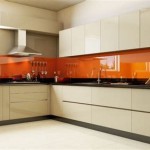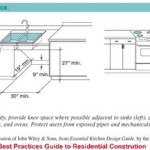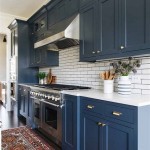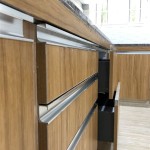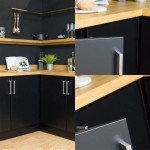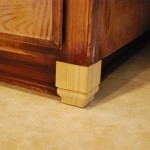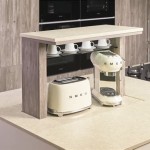How To Adjust Kitchen Cabinet Hinges: A Comprehensive Guide
Kitchen cabinet hinges, while seemingly simple, are intricate mechanisms responsible for the smooth and proper functioning of cabinet doors. Over time, factors such as humidity, temperature fluctuations, and regular use can cause these hinges to shift, leading to misaligned doors, sagging, rubbing, or difficulty closing. Understanding how to adjust cabinet hinges is a valuable skill for any homeowner, allowing for quick and effective repairs without the expense of professional assistance. This article provides a comprehensive guide to adjusting kitchen cabinet hinges, covering common issues, hinge types, and step-by-step instructions.
The primary goal of hinge adjustment is to achieve a uniform and aesthetically pleasing appearance for all cabinet doors. A well-aligned door will close securely, prevent damage to the cabinet frame and door itself, and contribute to the overall functionality and visual appeal of the kitchen. Before beginning any adjustment, it is crucial to identify the specific problem and the type of hinge involved. This initial assessment will determine the appropriate steps to take and ensure the most efficient and effective solution.
Identifying Common Cabinet Door Problems
Several common issues can arise with cabinet doors, indicating a need for hinge adjustment. Understanding these problems is the first step in diagnosing the required repair.
Door Sagging or Drooping: This is perhaps the most frequent complaint. A sagging door will hang lower than the surrounding doors, often scraping against the cabinet frame or the floor. Sagging can be caused by loose hinge screws, a worn hinge, or an improperly adjusted hinge.
Door Rubbing: A rubbing door will scrape against the adjacent door or the cabinet frame when opened or closed. This can cause damage to the paint or finish and create an unpleasant noise. Rubbing can occur due to a misaligned hinge or a warped cabinet frame.
Door Not Closing Properly: If a cabinet door refuses to close completely, or requires excessive force to latch, hinge adjustment is often the solution. This issue can be caused by hinges that are too tight, too loose, or improperly aligned.
Door Gaps: Uneven gaps between cabinet doors or between a door and the cabinet frame can be unsightly and indicate a hinge adjustment is necessary. Gaps can result from loose hinge screws, warped doors, or incorrect hinge placement.
Loose Hinges: If the hinges themselves are loose within the cabinet frame or the door, they will require tightening or replacement. Loose hinges are a common cause of sagging and misalignment.
By carefully observing the behavior of the cabinet doors, it is possible to pinpoint the specific problem and determine the necessary adjustments. This careful diagnosis will save time and effort in the long run.
Understanding Different Types of Cabinet Hinges
Cabinet hinges are available in a variety of styles, each with its own adjustment mechanisms. Familiarity with common hinge types is essential for successful adjustment.
European Hinges (Concealed Hinges): These hinges are the most common type found in modern kitchens. They are typically concealed when the cabinet door is closed, offering a clean and contemporary look. European hinges are known for their adjustability, offering adjustments in three directions: vertical, horizontal (lateral), and depth.
Face Frame Hinges: These hinges are designed for cabinets with a face frame, which is a wooden frame that surrounds the cabinet opening. Face frame hinges are typically visible when the cabinet door is closed and are available in a range of styles, including partial wrap, full wrap, and compact hinges.
Butt Hinges: These traditional hinges are mortised into both the cabinet frame and the door. They are typically used on older cabinets and require precise installation for proper functioning. Butt hinges offer limited adjustability.
Overlay Hinges: Overlay hinges are designed to mount the cabinet door so that it overlays the cabinet frame. They are available in various overlay amounts, such as half-overlay and full-overlay, which determine how much of the cabinet frame is covered by the door.
Inset Hinges: Inset hinges are designed to mount the cabinet door so that it sits flush with the cabinet frame. These hinges require precise installation and are often used for a more traditional or custom look.
Knowing the type of hinge installed in the cabinets is crucial because the adjustment procedures vary significantly between types. Inspecting the hinge closely will usually reveal its type, and sometimes the manufacturer's markings.
Step-by-Step Instructions for Adjusting Cabinet Hinges
Once the problem has been identified and the hinge type has been determined, the adjustment process can begin. The following steps provide a general guide for adjusting common types of cabinet hinges. Always use the appropriate tools and exercise caution to avoid damaging the cabinet or hinges.
Tools and Materials Required:
- Screwdriver (Phillips head and flat head, depending on the hinge type)
- Drill with screwdriver bit (optional, for faster screw adjustments)
- Level
- Shim (optional, for leveling cabinet frames)
- Pencil
Adjusting European Hinges (Concealed Hinges):
European hinges typically have multiple adjustment screws that allow for precise alignment. The location and function of these screws can vary slightly depending on the manufacturer, but the general principles remain the same.
Vertical Adjustment: Locate the vertical adjustment screw, which is usually located on the hinge arm that attaches to the cabinet frame. Loosen this screw slightly and gently move the door up or down until it is aligned with the adjacent doors. Tighten the screw to secure the door in its new position. Check the alignment and repeat if necessary.
Horizontal (Lateral) Adjustment: Locate the horizontal adjustment screw, which is usually located on the hinge cup that is mounted in the cabinet door. Loosen this screw slightly and gently move the door left or right until the gap between the doors is even. Tighten the screw to secure the door in its new position. Check the alignment and repeat if necessary.
Depth Adjustment: Locate the depth adjustment screw, which is usually located on the back of the hinge cup. Loosen this screw slightly and gently move the door in or out to adjust the overlay. Tighten the screw to secure the door in its new position. Check the alignment and repeat if necessary. Depth adjustment is especially useful for achieving a consistent gap between the door and the cabinet frame.
Adjusting Face Frame Hinges:
Face frame hinges typically have fewer adjustment options compared to European hinges. The adjustment process usually involves tightening or loosening the screws that attach the hinge to the face frame and the cabinet door.
Tightening Loose Screws: The most common issue with face frame hinges is loose screws. Use a screwdriver to tighten all the screws that attach the hinge to the face frame and the cabinet door. If the screws are stripped, replace them with longer or thicker screws. In some cases, it may be necessary to fill the screw holes with wood glue and toothpicks or small wooden dowels before re-drilling the screw holes.
Packing or Shimming: If the door is sagging or rubbing, it may be necessary to add shims behind the hinge plate to realign the door. Cut small pieces of cardboard or wood veneer and place them behind the hinge plate where it attaches to the face frame or the cabinet door. This will effectively move the hinge outward and adjust the door's position. Secure the hinge plate with screws, ensuring the shims remain in place.
Adjusting Butt Hinges:
Butt hinges offer the least amount of adjustability. Most adjustments involve addressing loose screws or, in more severe cases, removing and re-mortising the hinges.
Tightening Loose Screws: As with face frame hinges, start by tightening all the screws that attach the hinge to the cabinet frame and the door. If the screws are stripped, replace them with longer or thicker screws, or fill the screw holes as described above.
Bending the Hinge Leaf: This is a less common, but potentially effective adjustment. If the door is slightly misaligned, it may be possible to gently bend one of the hinge leaves to correct the alignment. Use pliers to carefully bend the hinge leaf a small amount, and then reattach the door to check the alignment. Repeat this process as needed, being careful not to over-bend the hinge leaf.
Shimming: Similar to face frame hinges, shimming behind the hinge plate can help to correct minor misalignment issues.
General Tips for Hinge Adjustment:
- Work Methodically: Adjust one hinge at a time, checking the alignment after each adjustment. Avoid making multiple adjustments simultaneously, as this can make it difficult to determine which adjustment is having the desired effect.
- Use the Right Tools: Using the correct screwdriver size is crucial to avoid stripping the screw heads.
- Avoid Over-Tightening: Over-tightening screws can damage the hinge or the cabinet frame. Tighten the screws firmly, but avoid excessive force.
- Check for Warped Doors or Frames: In some cases, hinge adjustment may not be sufficient to correct the problem. If the cabinet door or frame is warped, it may be necessary to replace the door or frame.
- Consider Lubrication: Applying a small amount of lubricant (such as silicone spray or WD-40) to the hinge pivot points can help to improve the smoothness of the door's operation.
- Replace Damaged Hinges: If a hinge is severely damaged or corroded, it should be replaced rather than adjusted.
By following these steps and tips, most common cabinet door alignment problems can be easily resolved. Patience and careful attention to detail are key to achieving a professional-looking result.

How To Adjust Your Kitchen Cupboard Doors Made Easy

How To Adjust Kitchen Cupboard Hinges The Big Idea

How To Adjust Your Kitchen Cabinet Hinges Solid Wood Cabinets Information Guides

Adjusting Cabinet Hinges The Diy Life

How To Adjust Hinges The Right Way Hestia Hearth Design Burlington

How To Adjust Your Cabinet Door Hinges Properly

Hinges And Drawers Kitchen Units

How To Adjust Kitchen Cabinet Doors

Home Dzine Kitchen How To Adjust Concealed Cabinet Hinges

How To Adjust Your Kitchen Cabinet Hinges Solid Wood Cabinets Information Guides
Related Posts

